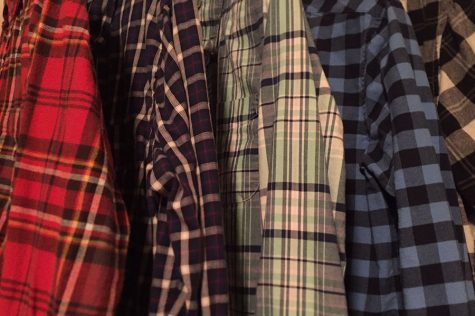Ladies, let’s talk tampons
Every girl goes through the wonderful week known as the period week. Typically this week is full of emotions, stress, and cramps. We cannot forget the amount of skill it takes to grab a tampon from your locker in the middle of the hallway, but still hiding it from the human eye.
Tampons are something that will be in a girl’s life starting roughly in 7th grade and will be used for many, many years after that. We have been taught to go out to your local store and buy a box of Tampax Pearl, Playtex Sport, Kotex, or several other brands. However, there is a good chance that you never actually stopped to think what a tampon is made of. The average woman uses about 20 tampons per cycle, so about 240 tampons a year. This adds up to roughly be about 9,600 tampons in a lifetime. It is essential for us to know what we put inside of our bodies, especially something that you use several times throughout the year.
When purchasing a box of tampons the thought to check the ingredients never really occur, but even if you do check there is one problem. Tampon boxes are not required to list the ingredients of a tampon because they are considered “medical devices.”
Many tampons today are made out of small amounts of cotton mixed with rayon, vicose, and wood fluff pulp, but definitely not organic cotton. The rayon and vicose propose a slight issue because of their highly absorbent fibers. These fibers can stick to your vaginal wall, and when removed, the fibers can stay behind causing a greater chance for TSS or Toxic Shock Syndrome.
Tampons have a very pristine white look to them, but in order for them to look this way they need to be bleached. Normally they use chlorine to bleach the tampons, which can cause toxic dioxin and other disinfection-byproducts. The dioxins collect in your fatty tissues, and dioxins are a serious health threat with no “safe” level of exposure.
There is also a possibility that the tampons have pesticide in them. Cotton makes up 2.4% of the world’s land, and each year two billion dollars is spendt on pesticides just for this one crop. Not only are there potential pesticides, but there are several different chemicals laced in tampons for odor neutralizers and other fragrances.

If you are looking for an organic and chemical free tampon there are a couple options. The first option is a brand of tampons called Cora. Cora is a brand of tampons that is 100% organic. They only use premium cotton, and it is woven specifically for the maximum strength of a tampon. It is 100% hypoallergenic and contains a BPA free plastic applicator for safety and comfort. There are no fragrances, deodorizers, rayon or synthetics used in this brand of tampons.
In countries around the world, there are a lot of girls who are not fortunate enough to use feminine products. They do not have the money to purchase something that is a necessity as a girl. Without a way to take care of their period, girls tend to stay home from school during that week, which eventually leads to dropping out around age 14. For every month supply of Cora you purchase, the company gives a month supply of sustainable pads to a girl in a developing country, so she can do anything while on her period.

An example as to how real this situation is right now: In India there are roughly 355 million women and girls who menstruate on a regular monthly basis. However, only 12% have access to sanitary napkins, and 200 million have a poor understanding of what menstrual hygiene even is. One in four Indian girls will drop out of school when they get their period.
Lola tampons are also an organic and chemically free brand of tampons. These tampons are also 100% organic and comes in a BPA free applicator. They are unscented, biodegradable, and hypoallergenic. They do not include synthetic fibers, chemical additives, fragrances, dyes, or chlorine bleach.
This brand of tampons also gives back to the community. However, when you purchase tampons they give back by giving to low income women in the United States. They chose to give back to people in the USA because millions of women have to choose between menstrual products for themselves or necessities for their families. Tampons are one of the most requested items at homeless shelters, but they are one of the fewest things donated.
The only other element about tampons that one may need to consider is price. Tampons are a necessity and unfortunately, they are not cheap. Tampons at a local drugstore or Target can range anywhere from $5.99 to $9.99. Cora’s tampons cost roughly $9.00 to $18.00 pending on how many tampons you need, and how you would like to pay. Cora allows you to choose what type and how many tampons you need for the month. They can also be shipped to Target for roughly $11.49, however you do not get to choose what is in the selection. At Lola, you can order one box of 18 tampons for $10.00 and 2 boxes for $9.00 each. You also have the opportunity to choose what type of tampons you would like to come in your box.
Overall, tampons are something that every girl will need at some point in their life. It is nice to know that many of us are fortunate enough to be able to use these products; however, it is also better for our health to know what is inside of them.













